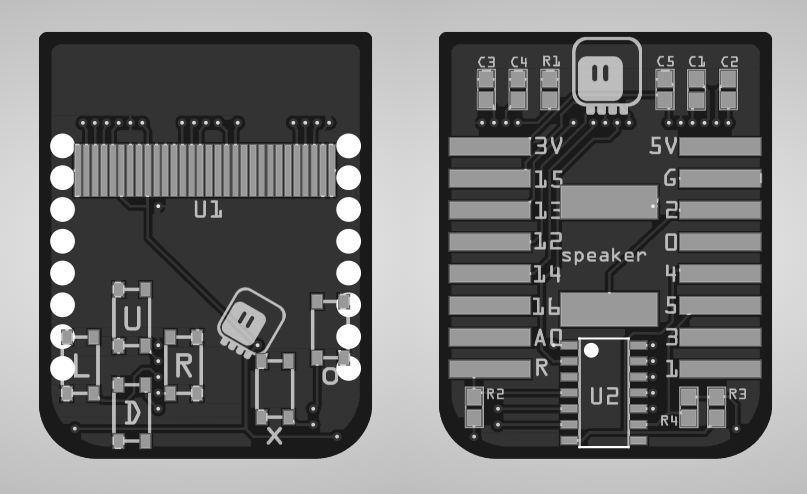The PCB Design¶
Published on 2019-06-08 in D1 Mini UI Shield.
This project actually started a looong time ago, back when I was still playing with D1 Mini Matrix Deluxe Shields , PewPew FeatherWing was starting to take shape in my head, and nobody even dreamed about µGame . I was inspired by the D1 Mini OLED shield, but I wanted some buttons on it, and I wanted them to be arranged in a d-pad. Then other projects happened, and I forgot about it, until recently, when I started to play with those OLED displays again, and found my old designs. Having learned a lot in that time, and having found some new really tiny buttons, I decided to revive this project and e-design it. I came up with this PCB design:

As mentioned in the description, it’s basically the D1 Mini X-Pad Shield compressed to a smaller size (and with two of the buttons removed), and with a display added on top. I used one of the free pins for the display’s reset (it has to be reset after powering on, and I didn’t want to waste the ESP8266 pin for that), but otherwise it’s the same.
I had a moment of doubt when choosing how to connect the display: it supports both I2C and SPI modes. In the end I decided to use SPI, even though the buttons already use I2C. That is because SPI is faster and supported in hardware by the ESP8266 (I2C is bit-banged).
Another challenge was fitting the 0.96” display and buttons on top of the shield, without them conflicting with the pins. In the end, I decided to use the same technique I used in the Gesture FeatherWing — angled pin headers soldered as SMD to the PCB, only this time I made them a bit shorter too.
In the end I had some free space in the middle, so I decided to put a buzzer in there, so you can even have sounds.
 deshipu.art
deshipu.art